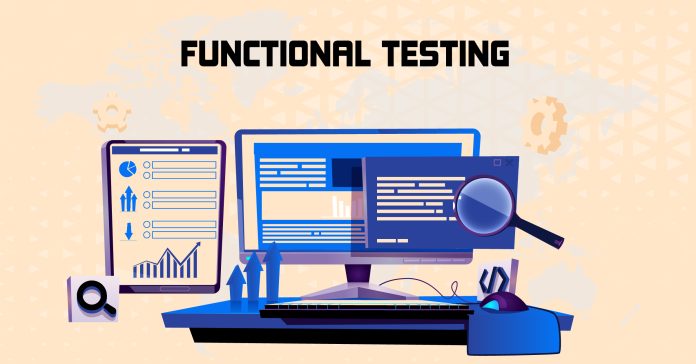For users to enjoy software, meticulous testing is imperative. Without thorough evaluation, even professionally engineered applications can be messed up with flaws. Brand reputations can equally suffer as well. So, while developing software, you must include a testing phase. Today, there are several techniques of testing. Each of them focuses on a particular aspect of the effectiveness or functionality of an app. One of the most widely used types of testing is functional testing in software testing.
Functional testing in software testing helps to generate high-quality software with the expectations of the users in mind. In a time where users are at the center of success, this testing is crucial. So, in this blog, we will look at why it’s important, how it functions, functional testing types, challenges, and more. So let’s get started.
Why is functional testing in software testing significant?
Functional testing in software testing is one of the most crucial elements while evaluating software. Its function is to verify that the features and operations of an application work as intended. Additionally, it checks to determine if it adheres to the specifications and designs. The software is systematically exposed to a variety of scenarios, inputs, and interactions during this phase. It strives to guarantee expected results.
The importance of functional testing lies in its ability to identify defects and deviations. That is too early in the software development cycle. Let’s see its importance in depth:
-
Ensuring reliability
Functional testing ensures that the software performs as intended. Hence increasing dependability and credibility. It reduces the likelihood of application crashes and issues.
-
User satisfaction
By conducting functional testing, software performance is ensured for end users. This improves the user experience and also promotes user adoption and loyalty.
-
Quality assurance
The process of functional testing in software testing results in software that is of a high caliber. One that satisfies or is above clients’ expectations. It does it through early flaw detection and correction.
-
Cost efficiency
It is more cost-effective to repair flaws early in the development process rather than later. Changes afterward have the potential to be more resource- and complexity-intensive.
-
Compliance
Software must adhere to a variety of regulatory standards and compliance criteria. Moreover, software conformity to these criteria is assisted by functional testing.
-
Risk mitigation
Early detection and resolution of functional problems reduce risks. The ones connected to software malfunctions and also potentially detrimental effects on corporate operations.
-
Enhancing performance
Performance stumbling blocks and inefficiencies can be found using functional testing. Ones that could affect the responsiveness and the application’s general speed. The top functional testing services can provide all of these benefits, with their experts initiating it for you.
A question that might arise is, how are functional testing and non functional testing different? Let’s find that out ahead.
How do functional testing and non functional testing differ?
Functional testing: This involves checking if the software’s functions and features work as intended. It examines actions like login processes and shopping cart operations. Unit, integration, system, and acceptability testing are examples of functional testing types. It also confirms if the software meets user needs.
Non functional testing: This assesses broader attributes like performance, security, and usability. It ensures software not only works but works well. Examples are load testing to gauge performance under heavy use and security testing to identify vulnerabilities.
Talking about the key differences, let’s take a look:
-
Focus
Functional testing in software testing checks core functions, whereas non functional testing covers quality attributes.
-
Testing types
Functional testing comprises unit, integration, system, and acceptance testing, whereas non functional testing includes performance, security, usability, load, and more.
-
Testing goals
Functional testing confirms if features work properly, whereas non functional ensures the software’s quality under various conditions.
-
Examples
Functional testing validates login accuracy, whereas non functional tests page load speed and security strength.
-
User perspective
Functional testing in software testing validates usefulness, whereas non functional focuses on user experience and software efficiency.
Both testing types are crucial. Functional ensures software is accurate, functional, and meets user needs. Non functional guarantees software’s reliability, security, and overall performance. Combining both ensures software that’s not only functional but also user-friendly and dependable. Indulge in functionality testing services to master both of them in one go.
By looking at its unmatched usefulness, you must want to know about its implementation, right? So, let us take a look at that in the next section.
How to implement functional testing in software testing?
Performing functional testing in software testing involves a systematic process. It ensures that a software application’s functions, features, and components operate as intended. So here’s a step-by-step guide on how to conduct functional testing:
-
Requirements analysis
Be sure to fully comprehend the specs and needs of the software before beginning any testing. It guarantees thorough covering.
-
Test case design
Create test cases that are clearly described and include a variety of scenarios, inputs, and interactions. It aids in identifying potential problems.
-
Test environment setup
Establish a controlled setting that mimics actual environmental factors. As a result, precise observations of software behavior are possible.
-
Execute test cases
Take the actions listed in each test case. Compare the final findings to what was anticipated, immediately pointing out any discrepancies.
-
Defect identification
Examine and note any variations from expected behavior during testing. Moreover, for the development team, it offers crystal-clear insights.
-
Defect reporting
Use a tracking tool to record systematically found flaws. Furthermore, it facilitates effective conflict settlement.
-
Test data management
Verify the availability of pertinent and representative test data. Moreover, its purpose is to assess several facets of the software’s functionality.
-
Documentation
Keep thorough records of the tests that were run, their results, the problems that were found, and the fixes that were made.
-
Automated functional testing
Time-consuming testing methods should be made simpler. Automation tools are used to do this, guaranteeing consistency and saving time.
But what about the difficulties you could run across while putting it into practice? Let’s examine what they are.
What are the challenges with functional testing in software testing?
Although essential, functional testing in software testing has its own unique set of difficulties. These are some of the main challenges you can face:
-
Incomplete or changing requirements
Uncertain or evolving requirements may leave testers unsure of what has to be checked. Functional testing’s effectiveness is thus impacted by this.
-
Scope management
It can be difficult to pinpoint the precise parameters of functional testing. This is primarily due to the complex interdependencies that software applications sometimes have.
-
Test case design
Creating thorough test cases that account for every conceivable scenario can take a while. Additionally, it might omit edge instances by accident.
-
Data availability
It can be difficult to gather and preserve diverse and pertinent test data. It has an impact on how accurate testing situations are.
-
Repetitive testing
Testing the same functionality at different levels (unit, integration, system) may be redundant. It may also require a lot of resources.
-
Regression testing
Regression testing can get complicated in an effort to make sure that new modifications don’t break old functions. As software develops, it also takes more time.
-
Environment configuration
Setting up test settings that reflect real-world circumstances might be challenging. As a result, this has an impact on how reliable test results are.
-
Dependency management
Coordinating dependencies like databases, external APIs, or services can be challenging. Thus, it affects how tests are run.
-
Automation challenges
While automation can speed testing, creating and maintaining automated scripts requires effort and expertise.
-
False positives and negatives
While performing functional tests, it can be challenging at times to distinguish between real problems and misleading positives or negatives.
Conclusion
Functional testing in software testing is a key component of software quality assurance. It guarantees that software meets user expectations. Hence, the importance of functional testing remains despite these obstacles. In addition, it helps with early fault detection, cost control, and software reliability. This approach is empowered by embracing strategic planning, seamless collaboration, and adaptive methodologies. This is done to provide superior software experiences. So, why not engage with professionals today?




















![TamilMV Proxy List Top 30+ [Unblock TamilMV Sites] TamilMV Proxy Unblock](https://technewsgather.com/wp-content/uploads/2023/04/17825836_SL-121019-25870-14-1-100x70.jpg)